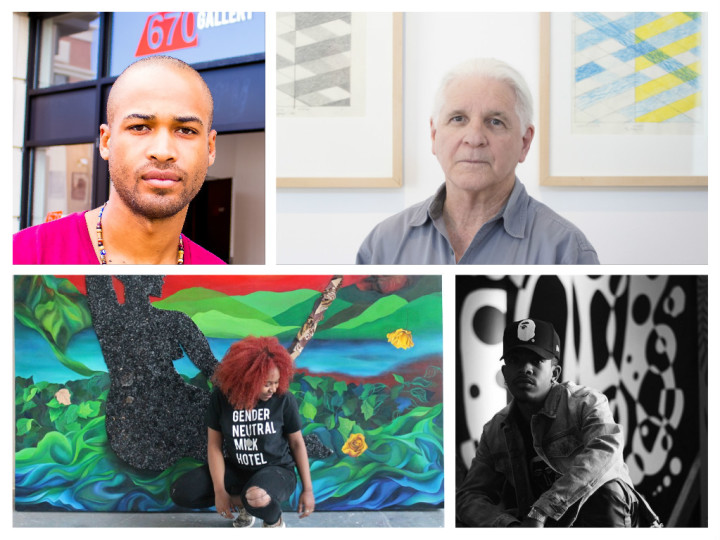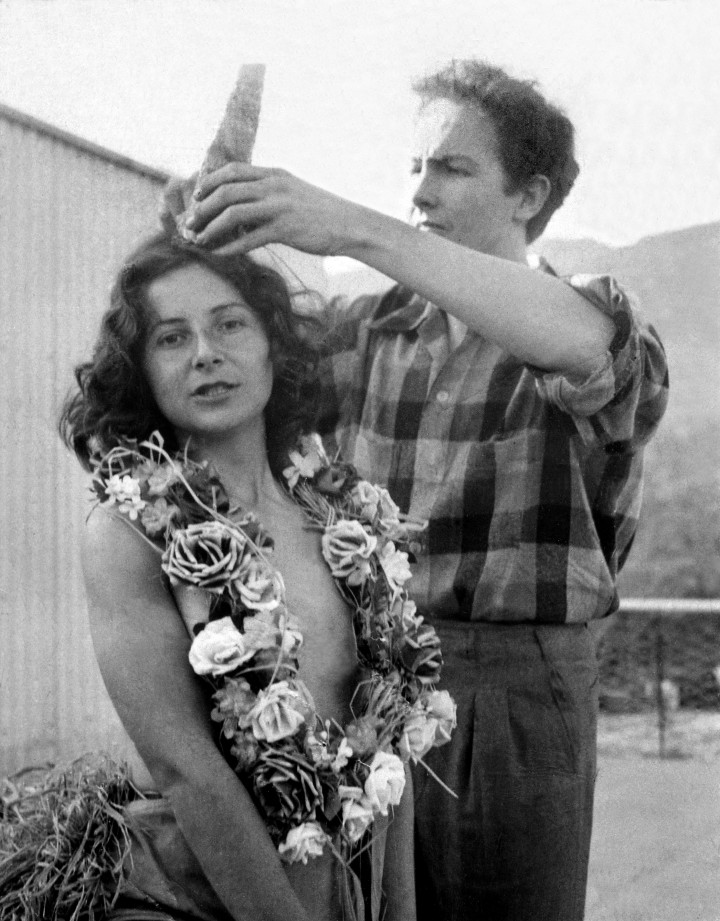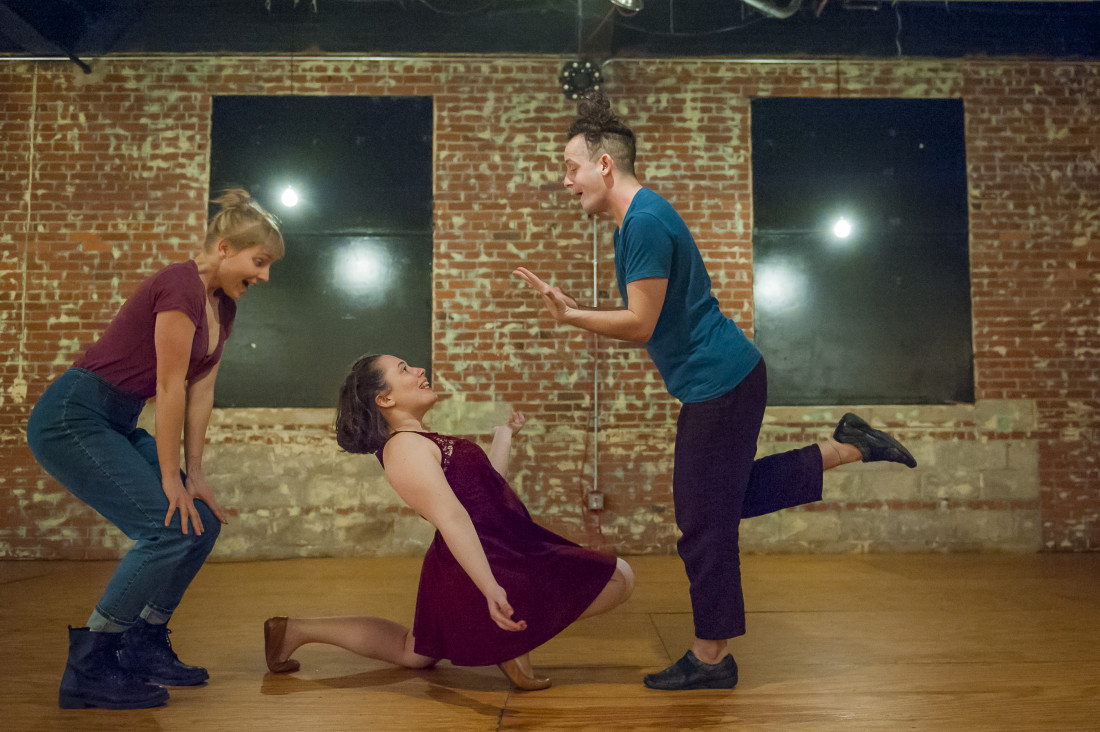Many of the artistic endeavors represented at {Re}HAPPENING — the more-or-less annual fundraiser for the Black Mountain College Museum + Arts Center — are in the spirit of Black Mountain College’s happenings. The first of those unscripted multimedia performances was staged at the college by composer John Cage in 1952.
But this year’s {Re}HAPPENING, taking place Saturday, March 25, at Camp Rockmont (the location of BMC, which shuttered in 1957), features a number of performances taking cues directly from alumni of the institution. Among those projects, “Canoe” by Thomas Dixon, Asa Jackson, Dathan Kane, ALXMCHL and Mahari Chabwera “is an exploration of the life and five artistic styles of Virginia native and Black Mountain College alumnus Cy Twombly,” according to a listing of the scheduled works. The installation deals with the connection between art and nature, and “links the stories of Native Americans and early settlers of Virginia and North Carolina and their geography and ecosystems to the evolutionary processes of art and the artist.”
Canoe as vehicle

Dixon learned about painter, sculptor and photographer Twombly through famed graphic artist Robert Rauschenberg, who was a contemporary and friend of Twombly and a neighbor of Dixon’s family. While a student at the Chouinard Art Institute, Dixon’s instructor was Emerson Woelffer, another BMC faculty member. Through an exhibition of Woelffer’s work at BMCM + AC, Dixon got to know of the museum and arts center. “I saw the announcement, probably less than a year ago, about the {Re}HAPPENING, and we decided to respond to it,” he says.
The idea for “Canoe” was a way to “commemorate Cy Twombly,” says Jackson who, with Dixon, runs the 670 Gallery in Hampton, Va. The installation “pulls in the historic aspect of Native Americans in Virginia and how the canoe [was] the first mode of transportation on the waterways,” says Jackson. The project incorporates five canoes that have been donated to the artists. Jackson says that Twombly, as a Virginia country boy, had an affinity for boats.
Though Twombly was passionate about both his home state, its natural environment and its history, his struggles as a gay man eventually led him to move to Italy, where he spent the last decades of his life. Because of that aspect of Twombly’s life, the “Canoe” project, “if it does deal with anything sociological, it’s probably about breaking down barriers rather than helping to keep them,” says Jackson.
“And he did have a great interest in, going back to the Sioux, how the [Native Americans] were displaced,” says Dixon. “That was a catalyst for putting this together. I walked in the backyard and saw one of my canoes and thought, ‘That’s it.’ And it stuck.” The boat, for Dixon and Jackson, became an icon.
“Going back into the history of Cy’s work, Tom and I picked out five distinct periods … starting with some of the chalkboard paintings in the ’60s, moving into the scribble-type paintings in the ’70s and then the flowers in the ’90s and 2000s,” says Jackson. “Each canoe will embody a different painting period.” All of the boats will be a collaborative effort of the artists involved with the project — Dixon and Jackson drew associates from the pool of artists who show at 670 Gallery; the group presenting at the {Re}HAPPENING is known as The Contemporary Arts Network and California’s Chouinard Foundation — as well as allowing for crowd participation.
Shared toolbox

Also part of this year’s {Re}HAPPENING is “The Witness,” performed by Triangle-based collective Anagnorisis. Some of the artists — Sean Rogers, Gabriel Baldasare, Zach Aliotta, Porter Witsell, Silvia Sheffield and Eli Viszk — have worked together in various configurations, but the Camp Rockmont show will be their joint debut.
“The Witness” is a score by late queer composer Pauline Oliveros. “It’s tied into the work we’ve been doing doing since last summer in terms of slowly building a shared movement history together,” says Sheffield. “We have a shared toolbox we can pull things from.”
But not everyone in Anagnorisis is strictly a movement artist. Aliotta is also a violinist, and Viszk does “body-based sound-art,” says Sheffield. “She has stethoscope mics so she can amplify bodily noises.”
These differences in mediums work within the context of Oliveros’ score, which states in its notes that it “may be performed by a soloist, as a duet with an imaginary partner, or as an ensemble for two to a hundred or more performers.” It can be staged as music, movement or drama or any combination thereof. “If performed as movement or theater, then movement or dramatic action is substituted for sound,” the score’s commentary reads.
Instructions for how the artists perform are open-ended but deal with sound and silence, reaction and attention to the self and to others. “The Witness” is written in three “strategies” — sort of like acts — and “continues until all performers are silent or still.”
“We were interested, as movers, in making [the voice] part of our expression,” Sheffield says. “As a musician, Zach already knew something about Pauline Oliveros as a composer, and I think she brought more into our consciousness.”
Oliveros passed away in November, at the same time that Anagnorisis was starting to work with her compositions. “This particular score stood out to us because it was explicitly something that could be done with sound or movement or theater, where some of her scores were definitely more focused on sound,” Sheffield says. “Reading through it, we were already working on some of the ideas that were in there, moving between solo work and group.”
To Aliotta, “The Witness” is about moving into relationship and then away from it, Sheffield says. “The openness attracted us to it because we could do our own thing within the structure and support of the score.”
Site-specific
Anagnorisis is not the only movement-based ensemble represented at the camp Rockmont event. New York-based contemporary company Dance Heginbotham will premiere a new site-specific work featuring dancer Lindsey Jones and pianist George Shevstov.
Chance Operations, this year and at past {Re}HAPPENINGs, is tasked with the mission of creating art on location around Lake Eden.
But site-specific installations extend beyond the purview of Chance Operations (for 2017, that group includes Gene A. Felice II, Owen Smith, Susan Smith, and students from The University of Maine, Intermedia MFA program and the Coaction Lab for Interdisciplinary collaboration). River Guerguerian’s “Resonating Forest” is an interactive installation where participants can create spontaneous sounds — using gongs, singing bowls, chimes and found objects — that fit into the natural environment.
And Severn Eaton’s “Withdrawl,” at the archery range, takes its cues from Buckminster Fuller‘s Dymaxion Map. Fuller, an architect, taught at BMC in 1948 and ’49. His Dymaxion Map, which “when flattened, minimized the distortion of land and water masses,” according to the Black Mountain College Project, had been patented in ’46. Eaton’s project places darts or arrows into areas on the map where there is current military involvement.
Another BMC alumni-inspired performance at the 2017 {Re}HAPPENING is by Chicago-based Third Coast Percussion, the Ensemble-in-Residence at the University of Notre Dame. The group will present works by Cage and fellow BMC teacher and composer Lou Harrison. The Third Coast Percussion show also includes music from Steve Reich and “more recent works by Glenn Kotche, Augusta Read Thomas, Danny Clay and Peter Martin,” according to a release for the event.
There’s something almost magical about bringing the work of Cage or Twombly — or even Oliveros, who was not a BMC alumnus but created in the experimental ethos of that institution — back to the shores of Lake Eden.
“We came up with the idea [for “Canoe”] with [Black Mountain College] in mind,” says Jackson. “We got attached to the mythology of it all. … Our reference point for the whole idea was the original campus.” The thought of the Twombly-inspired canoes drifting across the lake is a happy one — even though the five crafts are more likely to become gallery pieces than pleasure boats. Still, the connection of art and environment is enticing.
As Sheffield says, when asked about her thoughts on staging “The Witness” in Camp Rockmont’s Eden Hall — where Happenings once happened — “[Space] always is important. Even when you go to theater and you’re not thinking about it, the norms around the space are really informing around how the audience participates and the dancers act.” She adds, “I think every performance is a site-specific performance.”
WHAT: {Re}HAPPENING, rehappening.com
WHERE: Camp Rockmont, 375 Lake Eden Road, Black Mountain
WHEN: Saturday, March 25, 3-10 p.m. $20 advance/$25 general/$15 youth/free for children younger than 10. $10 parking pass/$5 round-trip shuttle from downtown Asheville




Before you comment
The comments section is here to provide a platform for civil dialogue on the issues we face together as a local community. Xpress is committed to offering this platform for all voices, but when the tone of the discussion gets nasty or strays off topic, we believe many people choose not to participate. Xpress editors are determined to moderate comments to ensure a constructive interchange is maintained. All comments judged not to be in keeping with the spirit of civil discourse will be removed and repeat violators will be banned. See here for our terms of service. Thank you for being part of this effort to promote respectful discussion.